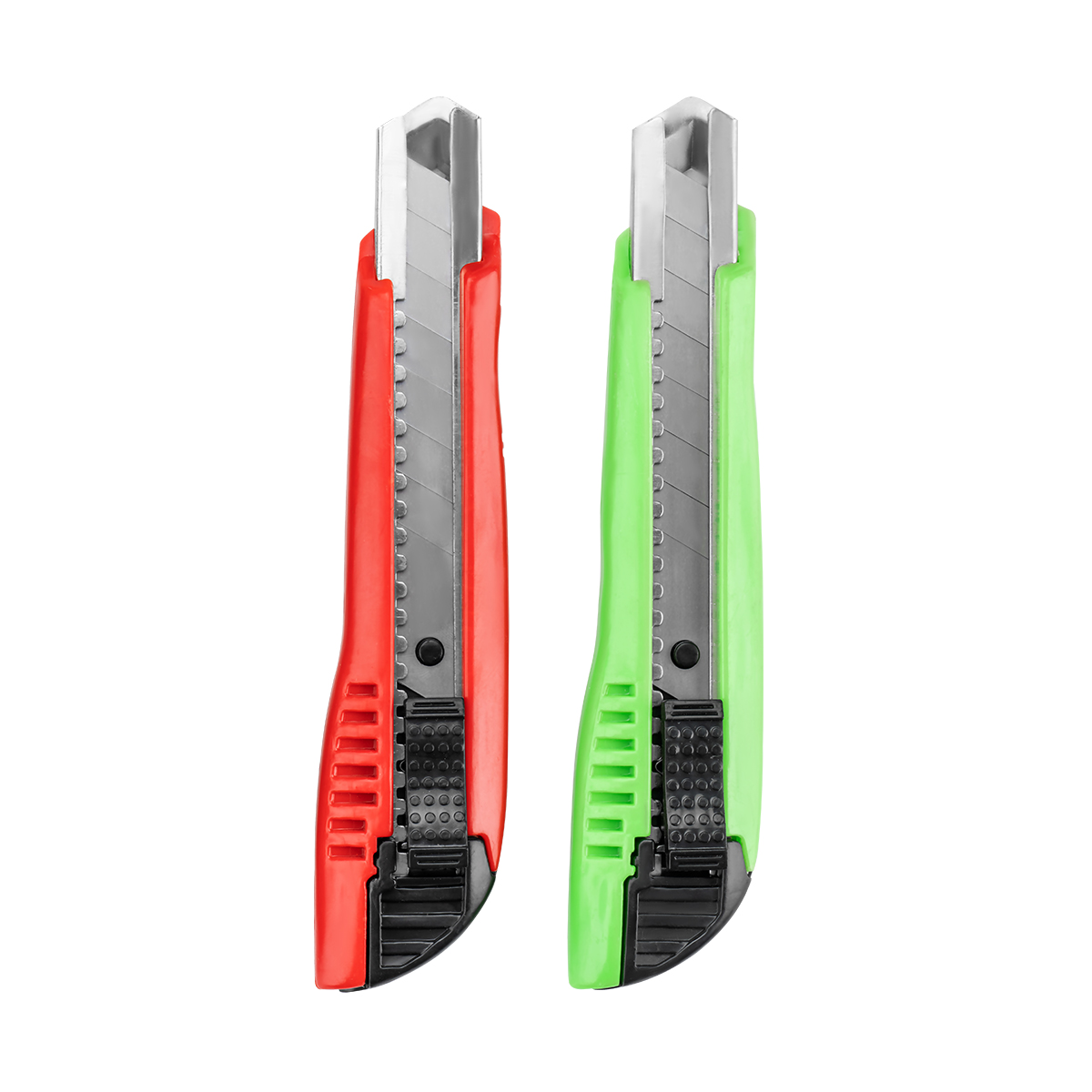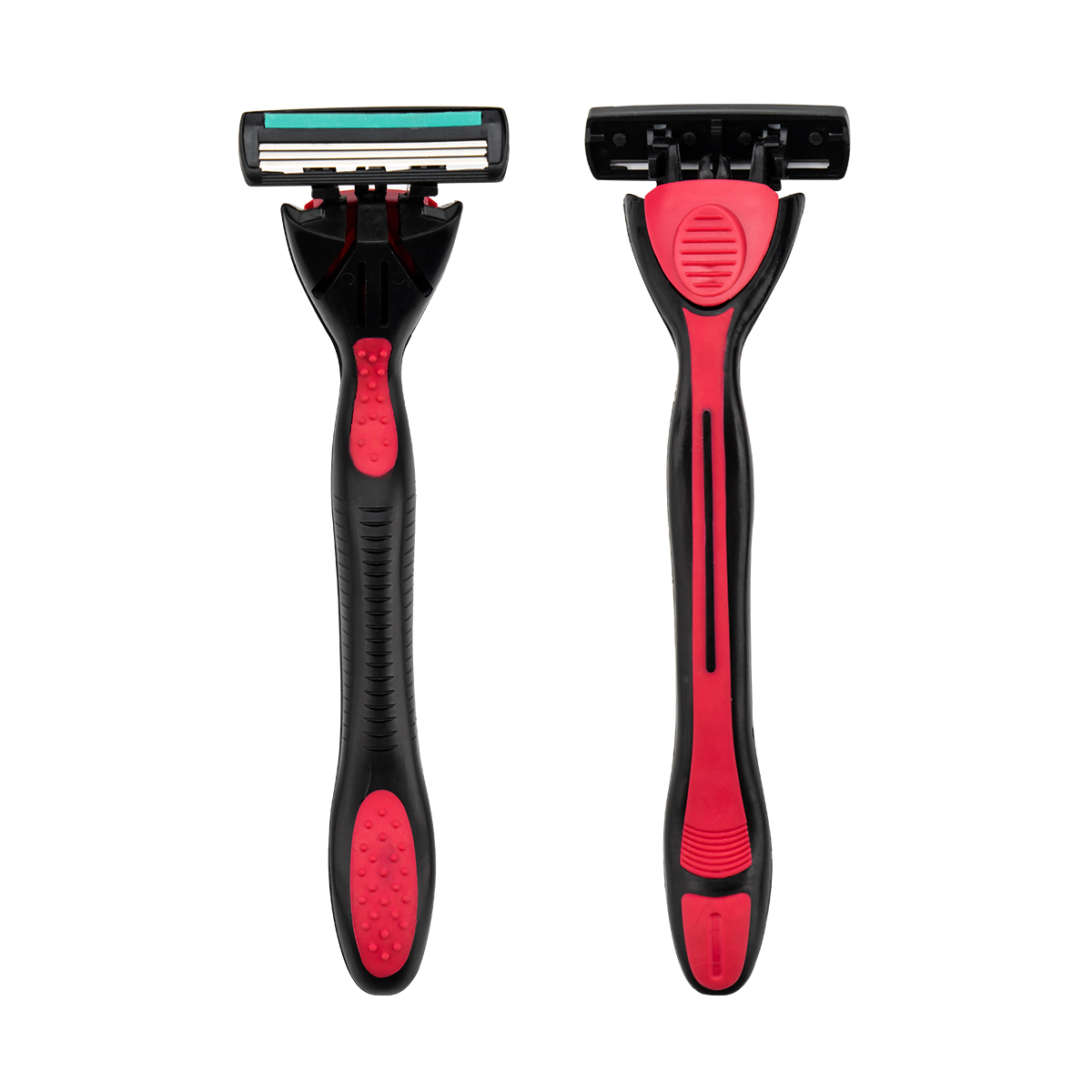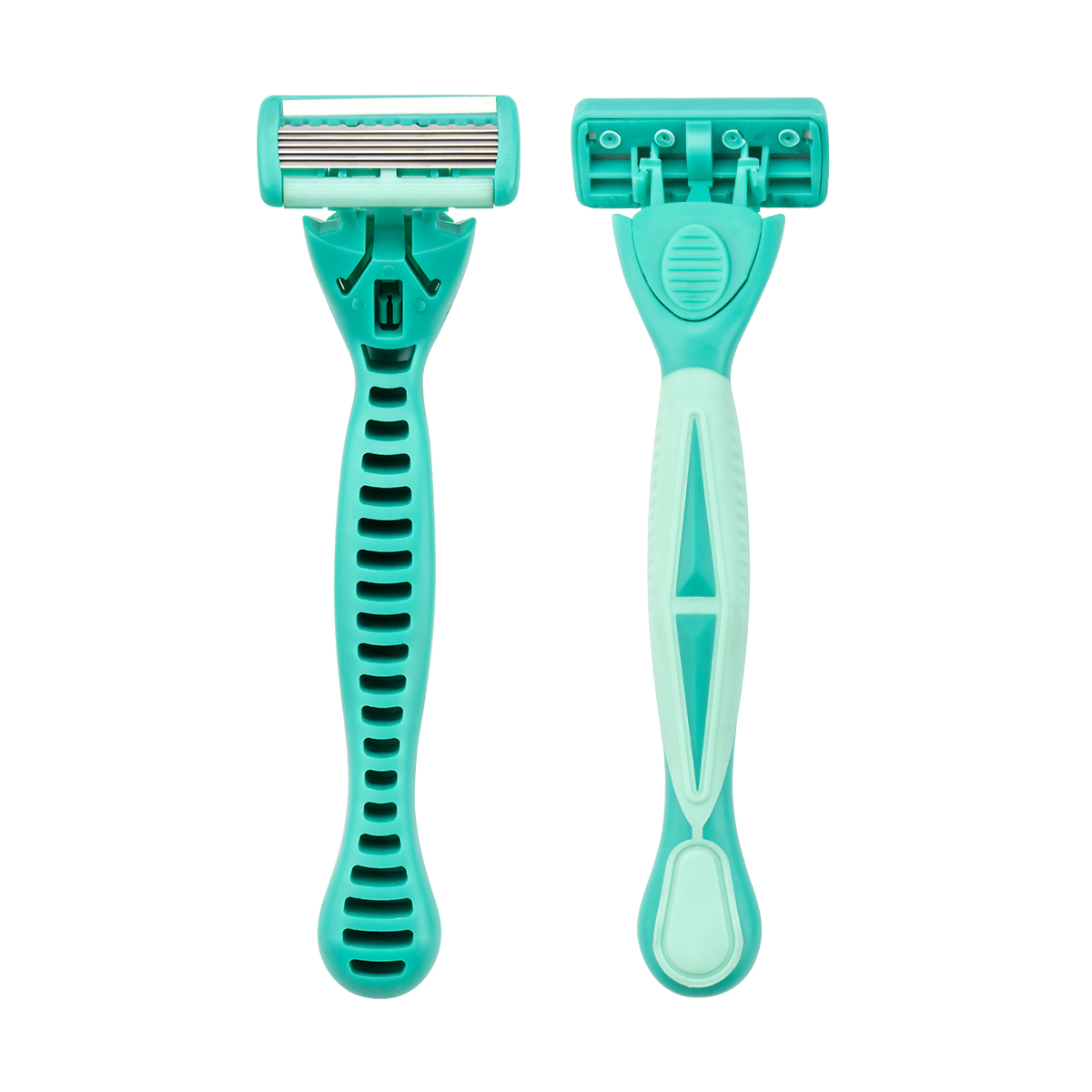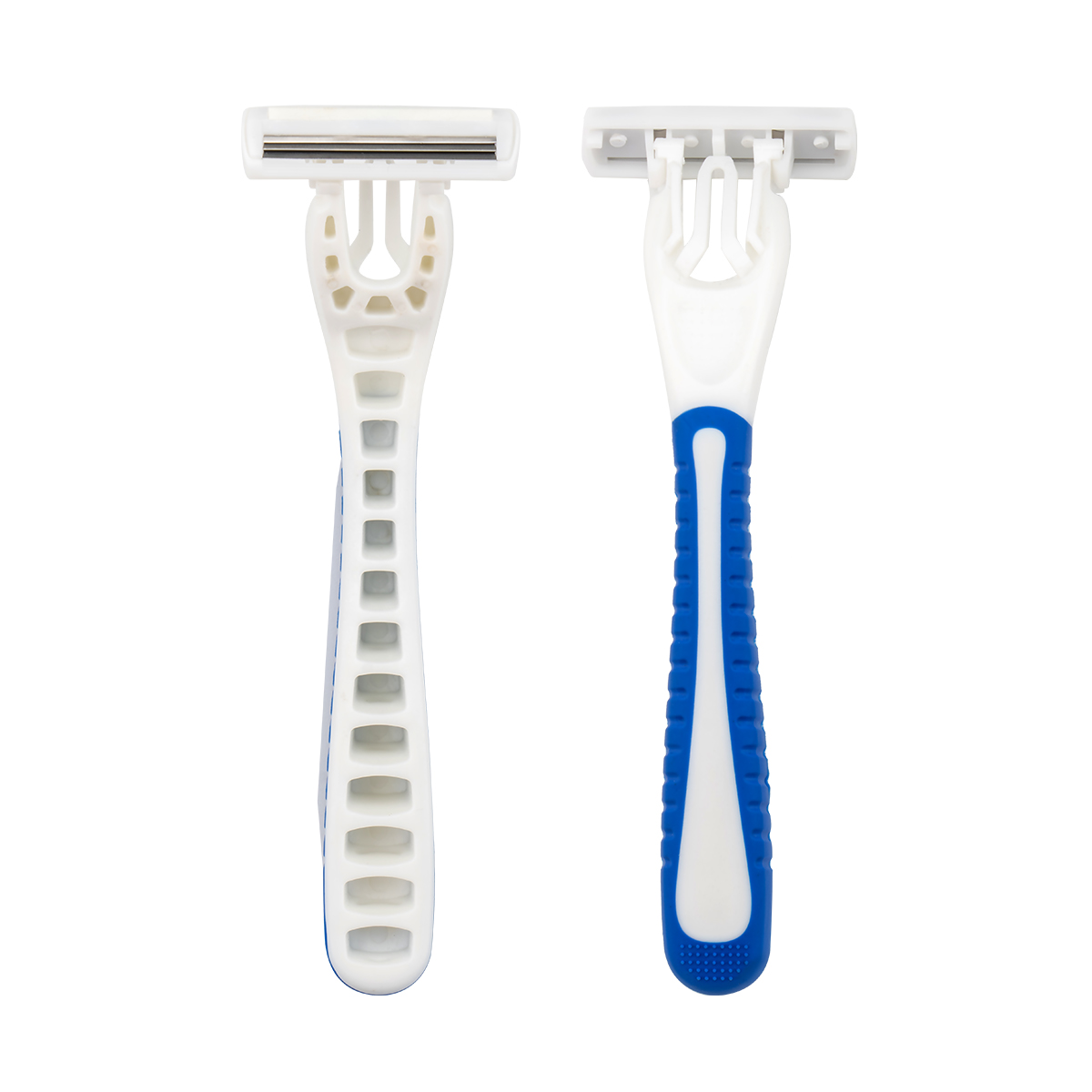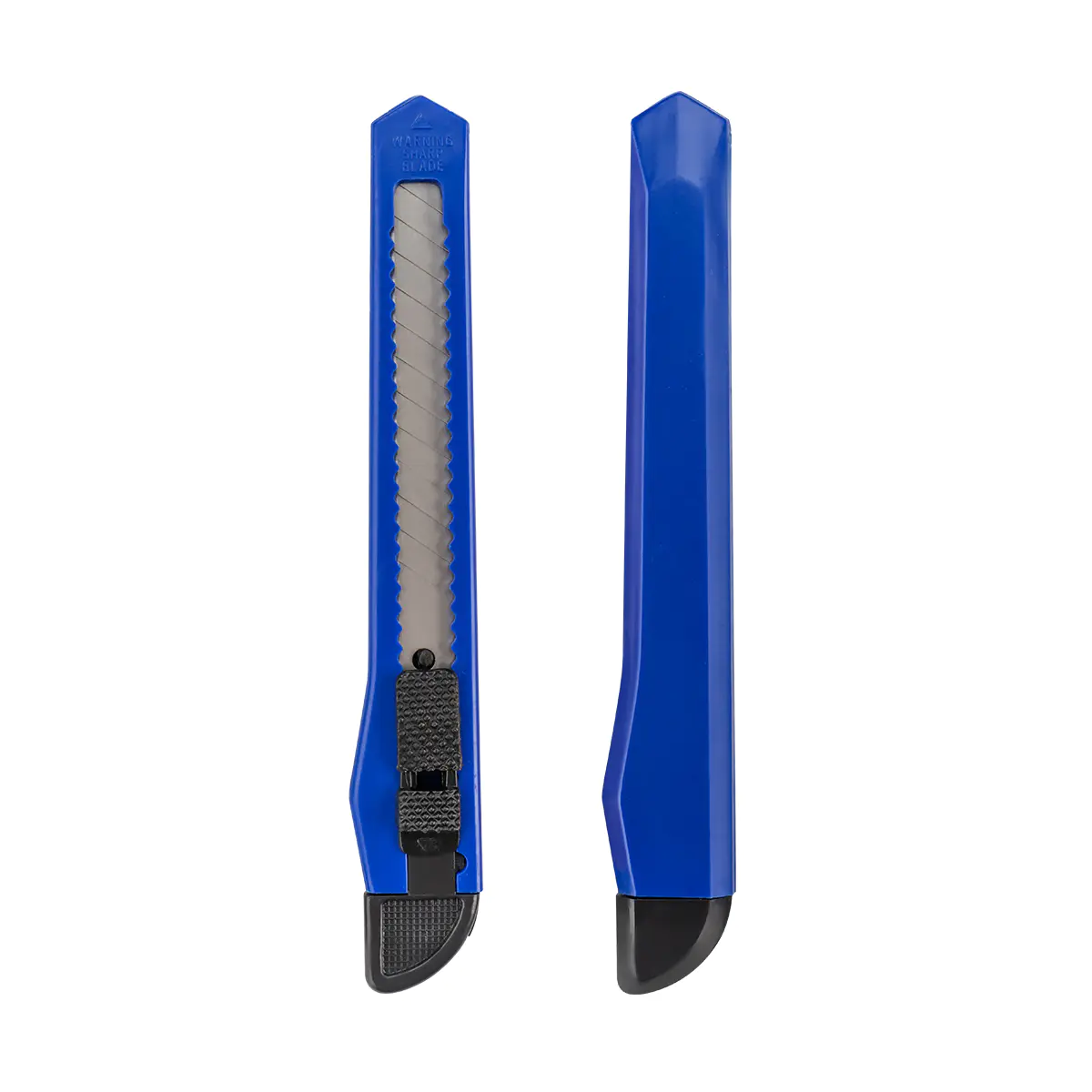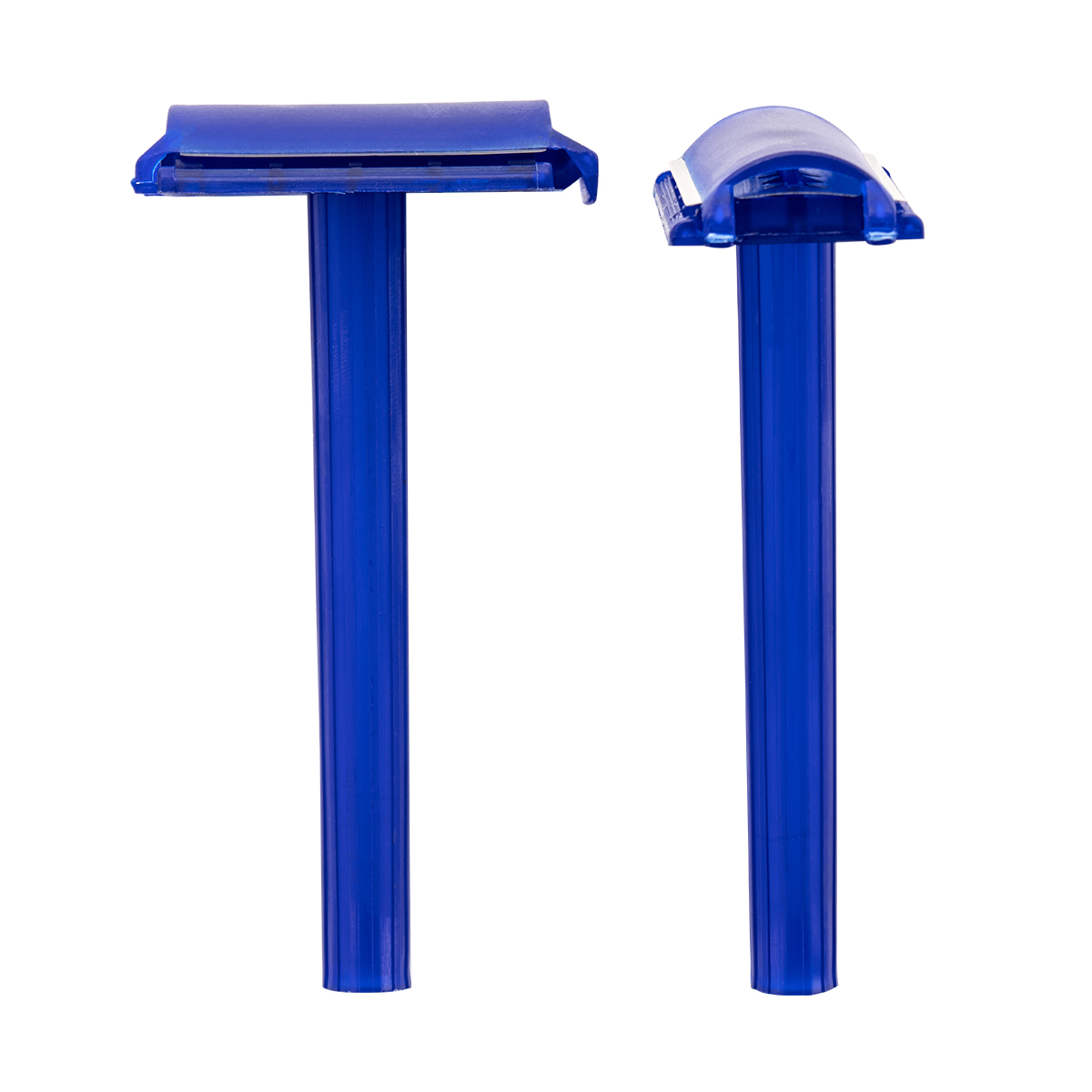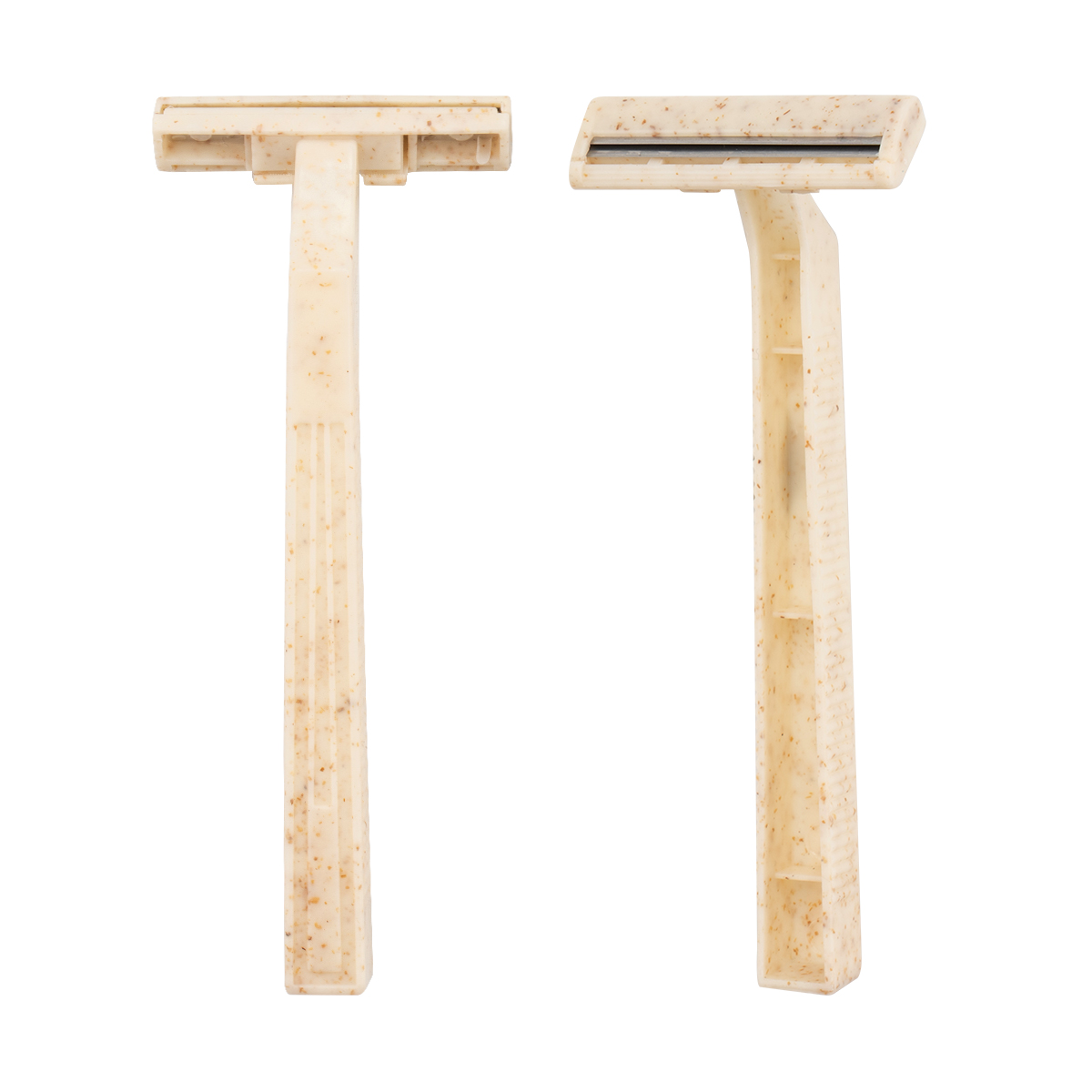We are an industry and trade enterprise
specializing in the production of disposable razors and utility knives for more than 30 years.
Razor News
Purchase guide and application value of environmentally friendly razors
Content
- 1 How to choos an eco-friendly razor?
- 1.1 Understand the basic concept of environmentally friendly razors
- 1.2 Determine whether the material is sustainable
- 1.3 Pay attention to the replaceability and service life of the blade
- 1.4 Check whether the packaging material is environmentally friendly
- 1.5 Choose the type according to the usage scenario
- 1.6 Evaluate the impact of the product's entire life cycle
- 1.7 Refer to third-party certification and environmental labels
- 1.8 Compare cost-effectiveness rather than just looking at the unit price
- 1.9 Explore local brands and niche products
- 1.10 Cultivate sustainable consumption habits
- 2 What are the practical benefits of using an eco-friendly razor?
- 2.1 Mitigation of environmental impact of eco-friendly razors
- 2.2 Reduce resource consumption and promote sustainable development
- 2.3 Potential benefits to personal health
- 2.4 Long-term economic savings
- 2.5 Enhance corporate social responsibility
- 2.6 Support the construction of an environmentally friendly industry chain
- 2.7 Improve users' environmental awareness and quality of life
- 2.8 In line with future consumption trends
- 3 Why can disposable razors also reflect environmental awareness?
- 3.1 The relationship between environmental awareness and daily necessities
- 3.2 The problem with traditional disposable razors
- 3.3 The design concept of environmentally friendly disposable razors
- 3.4 Material selection determines the degree of environmental protection
- 3.5 The experience and effect of environmentally friendly razors
- 3.6 From hotel equipment to personal use
- 3.7 Recycling mechanism and the possibility of reuse
- 3.8 Linkage trend with other environmentally friendly products
- 3.9 Balance between price, durability and environmental awareness
- 3.10 Can consumer choices bring about change?
- 3.11 Future development trends of environmentally friendly razors
- 3.12 Every shave is a choice of lifestyle
- 4 The practical significance of promoting eco-friendly razors in public places
- 4.1 Environmental awareness begins to spread from the public domain
- 4.2 Direct path to reduce disposable plastic waste
- 4.3 The actual embodiment of corporate image and social responsibility
- 4.4 Improve product substitution rate and promote healthy development of the industry
- 4.5 User experience is not contradictory to environmental protection
- 4.6 The subtle influence of educational functions
- 4.7 Policy support and promotion feasibility
- 4.8 The embodiment and promotion of sustainable consumption trends
- 4.9 Small tools carry big responsibilities
- 5 The relationship between personal consumption choices and green lifestyles
- 5.1 The connection between consumption behavior and environmental responsibility awareness
- 5.2 The core concept of green lifestyle
- 5.3 How consumption choices affect environmental quality
- 5.4 The integration of consumption upgrades and green trends
- 5.5 Social media promotes the spread of green consumption concepts
- 5.6 How brands and companies respond to green consumption needs
- 5.7 Policy guidance and green consumption synergy
- 5.8 Transformation of consumer roles: from buyers to participants
- 5.9 Consumption strategies for practicing green life
- 5.10 Challenges and hopes for continued promotion of green consumption
- 5.11 From consumer choice to systematic green life
- 5.12 The symbiotic relationship between green consumption and future society
- 6 The idea of building a green value chain behind environmentally friendly razors
- 6.1 Raw material selection: Control environmental burden from the source
- 6.2 Design optimization: Considering durability and degradability
- 6.3 Manufacturing: Reducing energy consumption and pollution emissions
- 6.4 Logistics and distribution: Optimizing transportation to reduce carbon emissions
- 6.5 Use and recycling: Extending the product life cycle to achieve resource circulation
- 6.6 Supply chain collaboration: Promoting the full implementation of green development
- 6.7 Future Outlook: Technological Innovation and Digitalization Drive Green Upgrade
How to choos an eco-friendly razor?
Understand the basic concept of environmentally friendly razors
An environmentally friendly razor refers to a shaving tool that minimizes the impact on the environment during design, manufacturing, use and disposal. Such products often use degradable, recyclable or recycled materials, or are designed with replaceable heads and extended service life. Environmentally friendly razors are not only reflected in the sustainability of materials, but also in the environmental considerations of the entire life cycle. Compared with traditional disposable plastic razors, it is different in materials, packaging and reuse. Therefore, when choosing an environmentally friendly razor, you must first clarify whether the definition of "environmental protection" fits your own usage habits and environmental awareness.
Determine whether the material is sustainable
The material is one of the core components of an environmentally friendly razor. Common environmentally friendly materials include wheat straw, bio-based plastics (such as PLA), degradable resins, recycled plastics, etc. Some products also use stainless steel or bamboo handles, which extend the service life while avoiding plastic pollution. When choosing, you can pay attention to whether the product indicates the source of the material and whether it has passed environmental certifications such as FSC, SGS, and OK compost. Especially for one-time use scenarios, such as hotel equipment, giving priority to biodegradable materials will help reduce the pressure of solid waste disposal.
|
Material Type |
Environmental Features |
Suitable Scenarios |
|
Wheat Straw |
Biodegradable, natural source |
Disposable use, high eco need |
|
Bio-based Plastic (PLA) |
Biodegradable, reduces plastic dependency |
Household and hotel disposable products |
|
Stainless Steel |
Durable, reusable |
Reusable razors |
|
Bamboo |
Natural material, biodegradable |
Handle manufacturing, adds texture and eco-friendliness |
Pay attention to the replaceability and service life of the blade
Some environmentally friendly razors use a replaceable blade structure to avoid the overall discarding of the blade due to blunting, thereby reducing resource waste. This type of design not only improves the efficiency of use, but also enhances the environmental protection attributes of the product. When purchasing, you can check whether standardized blade replacement parts are provided, whether the replacement is easy, and the service life and safety of the blade. High-quality blades are usually made of stainless steel, which has a certain corrosion resistance and reduces the need for frequent replacement.
|
Blade Type |
Service Life |
Replacement Convenience |
Environmental Impact |
|
Disposable Blade |
Short |
Not replaceable |
Generates more waste |
|
Replaceable Blade |
Long |
Easy to replace |
Reduces overall waste |
|
Stainless Steel Blade |
Long |
Requires periodic maintenance |
Longer usage cycle, less waste |
Check whether the packaging material is environmentally friendly
In addition to the razor itself, the packaging material is also an important reference factor for judging whether the product is environmentally friendly. Environmentally friendly packaging should try to avoid excessive plastic or composite materials, and use recyclable paper boxes, natural fibers or simple designs without additives. Some brands will also indicate the use of environmentally friendly elements such as recycled paper or soy ink on the packaging. Choosing products with simple and recyclable packaging not only reduces resource consumption, but also facilitates future waste sorting and disposal.
Choose the type according to the usage scenario
Different usage scenarios have different requirements for razors. For example, home users may pay more attention to the durability, shaving feel and replacement accessories of the product, while public places such as hotels and homestays prefer disposable environmentally friendly products, which require safety, convenience and easy disposal. For differentiated scenarios, the appropriate product type should be selected according to actual needs. For example, although disposable razors are convenient, more attention should be paid to whether they are degradable; for reusable razors, the feasibility of replacing the blade head and the sturdiness of the body should be considered.
|
Usage Scenario |
Main Requirements |
Recommended Product Type |
|
Household |
Durability, comfort, easy replacement |
Replaceable blade reusable type |
|
Hotel / Guesthouse |
Hygiene, safety, easy disposal |
Disposable biodegradable type |
|
Travel |
Lightweight, portable |
Lightweight portable type |
Evaluate the impact of the product's entire life cycle
When purchasing an environmentally friendly razor, you should not only focus on the environmental performance of a certain link, but should fully understand the entire process from production to disposal. For example, whether low-energy consumption equipment is used in the manufacturing process, whether the packaging is reduced during transportation, and whether recycling and processing are convenient are all factors in evaluating the environmental impact of the product. Some brands will provide information such as product carbon footprint and life cycle assessment report in the product description or official website to facilitate consumers to judge the overall performance of the product in terms of environmental protection.
Refer to third-party certification and environmental labels
There are good and bad environmentally friendly products on the market. In order to avoid being misled by "greenwashing", it is recommended to give priority to razor products with third-party environmental certification. For example, the EU's "EU Ecolabel", Germany's "Blue Angel", and the US's "USDA Biobased Products" certification are all authoritative green labels. Consumers can also pay attention to whether they meet the ISO 14001 environmental management system certification or whether they have passed the plastic substitute test. These certifications can help consumers identify products that are truly environmentally friendly to a certain extent.
Compare cost-effectiveness rather than just looking at the unit price
The price of environmentally friendly razors is often higher than that of ordinary plastic razors, but when evaluating, a comprehensive comparison should be made based on the service life, replacement cost, and user experience. For example, a razor that is slightly more expensive but can be used for more than a year is more cost-effective in the long run. In addition, some brands provide replacement blade sets, environmentally friendly combination packs, etc., which can also help reduce overall expenses. Users should not only use "high price" or "low cost" as the only judgment criteria, but should pay attention to the comprehensive value.
Explore local brands and niche products
While paying attention to internationally renowned brands, you may also want to learn about some locally manufactured niche environmentally friendly brands. These brands are sometimes closer to the actual usage habits of local consumers, and may also have more regional characteristics in material selection and packaging design. Some independent brands also advocate environmental protection concepts and promote green consumption through low-carbon manufacturing or public welfare activities. Choosing these products can not only meet daily needs, but also support the development of local environmental protection industries to a certain extent.
Cultivate sustainable consumption habits
Choosing an environmentally friendly razor should not be an impulse, but a part of a green lifestyle. Starting from daily shaving products and gradually extending to other daily necessities (such as toothbrushes, combs, toiletries, etc.), consumers can gradually build a systematic environmental consumption concept. Although the starting point of this habit change is small, the cumulative effect cannot be ignored. Environmental protection has never been an unattainable event, but the sum of specific choices.
What are the practical benefits of using an eco-friendly razor?
Mitigation of environmental impact of eco-friendly razors
By using biodegradable materials and reusable designs, eco-friendly razors significantly reduce plastic waste and resource consumption generated by traditional shaving products. For example, handles made of bio-based materials can decompose quickly in the natural environment, avoiding long-term pollution caused by plastic residues. At the same time, the design of replaceable blades reduces the overall waste generation and extends the life of the product. These features make eco-friendly razors an effective means to reduce the environmental burden during personal use.
Reduce resource consumption and promote sustainable development
Environmentally friendly razors not only focus on the disposal of products after use, but also pay attention to resource conservation during the manufacturing process. The use of recycled materials and environmentally friendly processes helps to reduce dependence on petroleum-based plastic and metal resources and support the concept of circular economy. Users choose eco-friendly razors, which indirectly promotes the development of green supply chains and lays the foundation for a wider range of sustainable production and consumption models.
Potential benefits to personal health
Some eco-friendly razors use natural materials or harmless processing methods to reduce the use of chemicals, which is more friendly to people with sensitive skin. The blade design focuses on reducing irritation and cuts, and improving the comfort of the shaving process. In addition, environmentally friendly materials often have good air permeability and skin-friendliness, which helps to reduce skin stress.
Long-term economic savings
Although the initial investment of environmentally friendly razors may be slightly higher than that of ordinary disposable products, their durability and replaceable blade design bring long-term cost advantages to users. Users do not have to frequently replace the entire razor, but only need to replace the blade to maintain use, reducing daily expenses. For occasions such as hotels that require large-scale purchases, environmentally friendly razors can also reduce waste disposal costs and environmental compliance risks.
Enhance corporate social responsibility
Enterprises use environmentally friendly razors as welfare products for employees or customers, reflecting their commitment to environmental protection and enhancing their corporate image. Promoting the popularization of environmentally friendly razors will help form a green consumption culture and influence more people to pay attention to environmental issues. Consumers' choices also reversely promote companies to improve product design and production processes, and promote the entire industry to develop in a more sustainable direction.
Support the construction of an environmentally friendly industry chain
The promotion of environmentally friendly razors has promoted the progress of related raw material supply, recycling and environmental protection technologies. This not only drives the development of the green industry chain, but also promotes technological innovation and employment opportunities. As market demand grows, more companies will increase their investment in environmentally friendly materials and designs, and promote the upgrading and transformation of the entire shaving products industry.
Improve users' environmental awareness and quality of life
Choosing an environmentally friendly razor is part of a personal practice of an environmentally friendly lifestyle, which helps to improve users' attention and participation in environmental protection. Users feel the environmental advantages of the product in daily use, and are more likely to form good habits of saving resources and reducing waste. Such small changes accumulate and have a positive impact on the sustainable development of society as a whole.
In line with future consumption trends
As the concept of environmental protection is deeply rooted in the hearts of the people, consumers' demand for green products continues to grow. As a green product close to life, environmentally friendly razors are in line with the development direction of the market. Choosing an environmentally friendly razor not only meets personal needs, but also conforms to the trend of social development, reduces environmental pressure, and is conducive to building a greener and more harmonious living environment.
Why can disposable razors also reflect environmental awareness?
The relationship between environmental awareness and daily necessities
Environmental awareness is not just an issue that large industries or energy projects need to pay attention to. More and more environmental protection concepts are being integrated into daily necessities. A seemingly ordinary disposable razor can also contribute to slowing down resource consumption and reducing environmental pollution if environmental factors are considered in design, materials, and usage. As people pay more attention to environmental issues, the selection criteria for daily necessities are also changing, gradually shifting from "functional and practical" to "low-carbon and environmentally friendly".
The problem with traditional disposable razors
Traditional disposable razors generally use plastic to make handles, which are difficult to recycle. At the same time, the blade material often contains composite metals, which are complicated to disassemble. Large-scale use and disposal not only increases the pressure on landfills, but also causes waste of resources. Although this consumption method seems convenient, it has hidden dangers from an ecological perspective that cannot be ignored.
The design concept of environmentally friendly disposable razors
The new generation of environmentally friendly disposable razors has made adjustments in design concepts. First, the handle is often made of biodegradable plastic, bio-based materials or renewable resources to reduce plastic pollution; secondly, some products use replaceable blades to reduce the frequency of discarding the entire blade; in addition, reducing energy consumption, simplifying packaging and avoiding excessive printing during the manufacturing process are also common environmental protection measures.
Material selection determines the degree of environmental protection
The key to environmentally friendly razors lies in the material. Degradable plastics (such as PLA), bamboo materials, and biocomposites are being widely used. Compared with traditional polypropylene or polystyrene materials, these alternative materials are easier to decompose or recycle. The following table lists the comparison of common materials:
|
Material Type |
Biodegradability |
Recycling Difficulty |
Cost Impact |
Common Applications |
|
Conventional Plastic |
No |
High |
Low |
Traditional razors, packaging |
|
Biodegradable Plastic (PLA) |
Yes |
Medium |
Medium |
Eco-friendly handles, disposable cutlery |
|
Bio-based Plastic |
Partially |
Medium |
Medium-High |
Personal care products, food packaging |
|
Bamboo |
Yes |
Low |
High |
Handles, household product structures |
The experience and effect of environmentally friendly razors
Some users have a misunderstanding of "sacrificing experience" for environmentally friendly products, and believe that the performance of environmentally friendly razors will decline. In fact, most environmentally friendly razors have made careful optimizations in blade selection and structure to improve shaving smoothness and fit. Although the handle may be slightly harder or lighter than traditional plastics, it does not affect the shaving quality in daily use. Reasonable blade angles and lubrication strip designs have also been maintained.
From hotel equipment to personal use
The daily use of a large number of disposable razors in hotels, guesthouses and other places is an important part of the environmental transformation. Some brands have made environmentally friendly razors standard, which not only reduces the amount of garbage generated, but also conveys the company's environmental attitude. In personal consumption, more and more users who focus on sustainable lifestyles are beginning to choose environmentally friendly razors and participate in environmental protection with practical actions.
Recycling mechanism and the possibility of reuse
For environmentally friendly razors, the recycling mechanism is also an important part of the design. Some products use modular design to separate the blade and the handle, which is convenient for users to classify and recycle. Some brands have launched razor recycling plans to guide users to send back the used knives for reprocessing, reducing waste from the source.
Linkage trend with other environmentally friendly products
The promotion of environmentally friendly razors does not exist in isolation, but is linked with other environmentally friendly cleaning products such as environmentally friendly toothbrushes and paper-packaged shaving foams. The launch of a complete set of environmentally friendly cleaning solutions will help enhance consumers' environmental awareness and form systematic consumption habits. For brands, it is also a continuous way of environmental protection communication.
Balance between price, durability and environmental awareness
Environmentally friendly products often face a practical problem - slightly higher prices. Environmentally friendly razors invest more in materials and processes, resulting in higher costs. However, this difference is gradually narrowing as the market size expands. Consumers are also gradually realizing that a little extra investment in exchange for less environmental burden is a choice worth sticking to in the long run.
Can consumer choices bring about change?
A small environmentally friendly razor may not be able to change the entire industry structure immediately, but when more and more consumers begin to pay attention to issues such as materials, recycling, and carbon emissions, a joint force for environmentally friendly choices is formed. Only by promoting more brands to reform their production methods can the environmental pressure brought by disposable products be changed from the root.
Future development trends of environmentally friendly razors
In the future, environmentally friendly razors will develop in the direction of functional modularization, fully degradable materials, and intelligent usage records. For example, adding a replaceable blade system, integrating shaving fluid release, and even optimizing the use cycle by digitally monitoring shaving frequency. With stricter environmental regulations and technological advances, environmentally friendly razors will be closer to daily life and easier to use.
Every shave is a choice of lifestyle
An environmentally friendly razor is not only a tool, but also a reflection of a life attitude. By changing the raw materials, process, packaging, and usage methods, the small action of daily shaving has environmental significance. Every choice made by consumers will become an important link in the environmental protection chain. Starting from using an environmentally friendly razor, establishing a low-carbon consciousness in daily life is the true embodiment of environmental awareness.
The practical significance of promoting eco-friendly razors in public places
Environmental awareness begins to spread from the public domain
In today's society, the concept of environmental protection has gradually gained popularity. Although there have been many promotions of environmental protection habits in families, environmental protection practices in public places are more exemplary. When the public comes into contact with environmentally friendly razors in hotels, gyms, dormitories or other public health places, it not only increases the frequency of use, but also promotes the spread of green consumption concepts. Through these high-frequency use scenarios, environmental awareness can be gradually extended from local individuals to a wider group, forming a chain reaction.
Direct path to reduce disposable plastic waste
Traditional disposable razors are mostly made of non-degradable plastics, which are usually discarded directly after use and are difficult to recycle, causing a large amount of solid waste pollution. Environmentally friendly razors usually use degradable materials or easily recyclable structures, such as PLA biodegradable plastics or bamboo handles, which can decompose quickly in the natural environment and reduce the impact on land and water. Especially in places with large flow of people such as hotels and trains, promoting the use of environmentally friendly razors can effectively reduce the amount of plastic waste generated.
|
Type of Venue |
Monthly Usage (Units) |
Estimated Plastic Waste (kg) |
Waste Reduction with Eco Razors (kg) |
|
Mid-size Hotel |
5,000 |
75 |
60 |
|
High-speed Train |
2,000 |
30 |
24 |
|
Company Dormitory |
1,500 |
22.5 |
18 |
The actual embodiment of corporate image and social responsibility
Against the backdrop of green transformation, public institutions, enterprises and service industries are paying more and more attention to the integration of environmental protection policies. Reflecting social responsibility from the details is an important way for enterprises to enhance their public image. Including environmentally friendly razors in basic supporting facilities is a low-cost and widely influential improvement method. It can not only win the recognition of consumers, but also meet the requirements of green certification evaluation standards (such as LEED, green hotel standards, etc.).
Improve product substitution rate and promote healthy development of the industry
The promotion of environmentally friendly razors is not only a concept promotion, but also an effective way to stimulate the production and innovation of environmentally friendly products. Promotion in public places means a large and stable procurement demand, which helps to reduce the unit cost of environmentally friendly materials and expand its market size. In this way, environmentally friendly products are more acceptable and provide more research and development power for related companies.
|
Type of Product |
User Preference (%) |
Key Concern Factors |
|
Traditional Disposable Razor |
40% |
Cost, Habitual Use |
|
Eco-friendly Material Razor |
50 |
Environmental Impact, Minimal Packaging, Biodegradability |
|
Refillable Blade Razor |
10% |
Reusability, Product Lifespan |
User experience is not contradictory to environmental protection
Some consumers may worry that environmentally friendly razors have shortcomings in the use experience. However, with the advancement of technology, environmentally friendly razors have gradually approached or even surpassed ordinary disposable products in terms of blade sharpness, grip design, and wet water performance. When purchasing environmentally friendly razors in public places, products that have passed ergonomic tests and blade stability assessments can be given priority to ensure comfort.
The subtle influence of educational functions
The selection of items in public places often has a guiding effect, especially for hotels, campuses, hospitals and other institutions. While providing environmentally friendly razors, they can convey environmental protection knowledge through signs, slogans, small cards and other means. In the long run, this kind of subtle information transmission will help shape the public's environmentally friendly behavior habits.
Policy support and promotion feasibility
Against the background of increasingly stringent environmental protection policies in many places, governments and industry associations encourage public institutions and service places to use environmentally friendly products. Some cities have formulated regulations that hotels do not actively provide disposable plastic products, and environmentally friendly razors, as one of the alternatives, can comply with the policy direction. In addition, since environmentally friendly razors are mostly made of lightweight materials, the transportation cost is relatively low, and bulk purchases are economically feasible.
The embodiment and promotion of sustainable consumption trends
The use of environmentally friendly razors in public places is not only a means of responding to environmental protection calls, but also a concrete action to comply with the global sustainable development trend. By establishing a green supply chain and consumer feedback mechanism, the whole process from procurement to use and recycling can be tracked, providing basic data for subsequent product improvements and market research.
Small tools carry big responsibilities
Although the environmentally friendly razor is small, it plays multiple roles in the public domain. It is not only related to individual experience, but also to corporate responsibility, resource utilization, ecological protection and other dimensions. Promoting its use in public places is a highly operational, wide-reaching, and long-term sustainable environmental protection strategy.
The relationship between personal consumption choices and green lifestyles
The connection between consumption behavior and environmental responsibility awareness
In modern society, personal consumption is not only a process of satisfying one's own needs, but also a choice of resource utilization methods. With the spread of environmental protection concepts, people have gradually begun to realize the direct impact of daily consumption behaviors on the environment. For example, choosing disposable plastic products or reusable environmentally friendly materials is not just a trade-off of price or convenience, but also about resource consumption and ecosystem burden. Consumption has become one of the specific paths for individuals to participate in environmental protection.
The core concept of green lifestyle
The so-called green lifestyle refers to a lifestyle that minimizes the burden on the environment in daily life. Its core lies in energy conservation and emission reduction, low-carbon environmental protection and sustainable use of resources. This approach not only includes travel, diet, housing and other aspects, but also includes green transformation of shopping and consumption decisions. When consumers gradually tend to low-carbon products, environmentally friendly packaging, degradable materials and energy-saving equipment, green life is no longer just a concept, but is reflected in the consumption process with practical actions.
How consumption choices affect environmental quality
There is a direct connection between personal consumption and the ecological environment. For example: the extensive use of disposable products has increased the burden of plastic pollution, and the excessive purchase of fast fashion products has led to a rapid increase in textile waste; while giving priority to locally produced, organic or energy-saving labelled goods can help reduce transportation emissions and energy consumption. These seemingly trivial choices, when combined, will have a positive or negative impact on the overall environment.
The integration of consumption upgrades and green trends
In the current context of consumption upgrades, consumers are paying more and more attention to quality and added value, and green has become a dimension to measure the attractiveness of products. They no longer just pursue low-priced products, but pay attention to whether they are environmentally friendly and whether they conform to the concept of sustainable development. Green products are usually optimized in terms of materials, processes, and use cycles, so that while meeting daily needs, they also reflect a sense of responsibility for the social environment.
Social media promotes the spread of green consumption concepts
The change in the way information is disseminated has also had an impact on consumer behavior. Social platforms, short videos, self-media and other channels have allowed topics such as "green life" and "sustainable consumption" to be more widely discussed and concerned. Many consumers have learned about environmentally friendly brands, zero-waste lifestyles and green consumption skills on these platforms, forming consumer behaviors of imitation, following trends and even active choices, thereby promoting the spread of green living concepts.
How brands and companies respond to green consumption needs
In response to the trend of green consumption, more and more brands are making green transformations in product design, supply chain management, packaging materials, etc. Some companies have launched environmentally friendly series of products, such as bamboo fiber products, degradable packaging, carbon neutral products, etc., and at the same time emphasized their environmental attributes in marketing. This practice not only helps to attract environmentally conscious consumers, but also drives the industry as a whole to develop in a green direction.
Policy guidance and green consumption synergy
The government also plays a guiding and guaranteeing role in promoting green consumption. For example, policies restricting disposable plastic products, promoting green certification logos, and encouraging subsidy mechanisms for sustainable products are all creating favorable conditions for green consumption behavior at the policy level. The implementation of policies and personal choices cooperate with each other to form a two-way push from top to bottom and from bottom to top, and gradually build a more mature green consumption ecology.
Transformation of consumer roles: from buyers to participants
In the past, consumers were mostly regarded as passive recipients of goods, but under the trend of green consumption, consumers have gradually transformed into active participants. They not only pay attention to the product itself, but also care about its production process, environmental footprint, and waste disposal methods. In this process, consumer behavior is no longer just an expression of personal preference, but also a form of social participation. Through green consumption, individuals show their concern and responsibility for the direction of social development.
Consumption strategies for practicing green life
In order to better implement the green concept in consumption, consumers can adopt the following strategies:
Try to buy durable, high-quality, and repairable goods;
Give priority to local products to reduce transportation resource consumption;
Refuse excessive packaging and prefer simple and environmentally friendly designs;
Pay attention to environmental labels and third-party green certifications;
Try "renting instead of buying" or second-hand circulation models to extend the product life cycle.
Challenges and hopes for continued promotion of green consumption
Although green consumption is gradually becoming popular, it still faces realistic challenges such as high prices, opaque information, and environmental misleading. Some environmentally friendly products are priced too high, which affects public acceptance; some products have "pseudo-green" propaganda, which makes consumers misjudge. In addition, the popularity of green consumption concepts in some regions still needs to be improved. Therefore, improving public environmental literacy, strengthening green supervision, and building a transparent consumption environment are key paths to promote the sustainable development of green consumption.
From consumer choice to systematic green life
Green consumption is an important part of green lifestyle, but it should not be limited to purchasing behavior. To achieve a true green life, it is also necessary to combine it with energy-saving and emission-reduction living habits, green travel methods and environmentally friendly social awareness. From saving water and electricity to participating in garbage classification and resource recycling, green life is a systematic behavior structure that needs to be continuously promoted from three levels: consumption, living habits, and values.
The symbiotic relationship between green consumption and future society
The future sustainable society cannot do without green consumption as support. With the increasing pressure on resources and climate change, consumption patterns urgently need to change from high energy consumption and high waste to low carbon and sustainable. Green consumption behavior can not only alleviate environmental problems, but also provide enterprises and governments with a market foundation and policy impetus for sustainable development. Starting from the individual, every environmental protection choice is a key step towards a green future.
The idea of building a green value chain behind environmentally friendly razors
Raw material selection: Control environmental burden from the source
The green value chain of environmentally friendly razors starts with the selection of raw materials, which is a key link in controlling the overall environmental impact of the product. Traditional disposable razors are usually made of plastic materials that are difficult to degrade, resulting in a long-term burden on the environment after disposal. To reduce this impact, manufacturers are gradually adopting more environmentally friendly alternatives such as bio-based plastics, recycled plastics and natural materials. Bio-based plastics are derived from plant materials and have a certain degree of degradation ability, which can reduce dependence on fossil energy and carbon emissions. Recycled plastics are made by recycling waste plastics, which reduces resource consumption and environmental pollution. Natural materials such as bamboo are ideal for handle manufacturing due to their good reproducibility and natural degradation performance. At the same time, the blade part is mostly made of recyclable stainless steel, which is corrosion-resistant, has a long service life, and is easy to recycle. Reasonable selection of materials not only needs to consider environmental performance, but also must take into account cost and product use effect to ensure that environmentally friendly razors can meet market demand and be widely promoted.
Design optimization: Considering durability and degradability
In the design stage of environmentally friendly razors, how to achieve a balance between durability and environmental protection has become an important issue. Modular design is a common practice at present. This design allows users to replace only the blades instead of the entire razor, thereby extending the product life cycle and reducing waste generation. In addition, the design process reduces the use of complex multi-material mixtures to improve the overall recyclability of the product. The design also focuses on ergonomics to ensure comfortable use and encourage users to use the same razor for a long time, reducing the waste of resources caused by frequent replacement. Environmentally friendly razors usually have clear disassembly signs to facilitate users to correctly disassemble and classify for recycling, thereby reducing the environmental burden during waste disposal. In terms of packaging, it also strives to be simple and environmentally friendly, using degradable or recyclable materials to avoid excessive packaging, and further promote the implementation of green concepts. The overall design not only improves the practicality of the product, but also lays the foundation for subsequent resource recycling and reuse.
Manufacturing: Reducing energy consumption and pollution emissions
The manufacturing link is the core part of the green value chain of environmentally friendly razors, and the environmental impact of the production process is directly related to the overall sustainability of the product. In order to reduce energy consumption and harmful emissions, many manufacturing companies have introduced energy-saving equipment and green process technologies, optimized production processes such as injection molding and stamping, and minimized material waste. At the same time, the production workshop uses environmental protection facilities to effectively treat wastewater and waste gas to ensure that emissions meet environmental standards. The application of green energy is also becoming increasingly popular. Some companies have begun to use clean energy such as solar energy and wind energy to replace traditional coal-fired power energy and reduce carbon footprint. In addition, automated production not only improves efficiency, but also reduces resource consumption and waste generation in the production process. The use of harmful chemicals is strictly restricted in the production process to ensure that the product is harmless to the human body and the environment during manufacturing and use. Through these measures, environmentally friendly razor manufacturers strive to achieve the dual goals of economic benefits and environmental protection.
Logistics and distribution: Optimizing transportation to reduce carbon emissions
In the green value chain of environmentally friendly razors, logistics and distribution also affect the overall environmental burden. Enterprises scientifically plan transportation routes, give priority to low-carbon transportation methods such as railways and waterways, and try to avoid long-distance road transportation to reduce fuel consumption and greenhouse gas emissions. At the same time, promote the use of electric or hybrid logistics vehicles to further reduce the carbon footprint of the transportation link. Packaging design is also closely related to logistics, using lightweight and recyclable materials to reduce packaging waste and reduce energy consumption during transportation. In addition, many companies have shortened transportation distances, improved response speeds, and reduced the environmental impact of cross-border transportation through supply chain localization strategies. The green transformation of logistics is not only beneficial to the environment, but also helps to enhance the overall social responsibility image of enterprises.
Use and recycling: Extending the product life cycle to achieve resource circulation
The performance of environmentally friendly razors in the use phase is crucial to the integrity of the green value chain. By designing a replaceable blade structure, users do not need to frequently replace the entire razor, thereby reducing resource waste and waste generation. Companies encourage users to develop correct usage and maintenance habits, reduce excessive waste, and save clean resources. More importantly, the construction of a recycling system for discarded razors is a key link in achieving resource circulation. Convenient recycling channels and reasonable recycling policies can increase user participation and enable the effective recycling and reuse of waste razor materials. By disassembling and separating plastic and metal materials, not only environmental pollution is reduced, but also limited resources are reused. The cooperation between the government and enterprises has promoted the standardization of the recycling system and enabled the green value chain to play a greater role in practical applications.
Supply chain collaboration: Promoting the full implementation of green development
Building a green value chain for environmentally friendly razors requires close collaboration among all links in the supply chain. Raw material suppliers need to provide materials that meet environmental standards, manufacturers should ensure that the manufacturing process meets green production requirements, logistics companies assume low-carbon transportation responsibilities, and recycling companies ensure the efficiency of resource recycling. The application of information transparency and tracking technology enables companies to monitor environmental indicators in real time, optimize resource allocation, and improve the overall environmental performance of the supply chain. Industry associations and governments promote green transformation through the formulation of standards, policy guidance and supervision. The improvement of consumers' green awareness has also become an important force in promoting green transformation of the supply chain. Only with the cooperation of multiple parties can the green value chain of environmentally friendly razors be steadily constructed to achieve the organic unity of environmental, economic and social benefits.
Future Outlook: Technological Innovation and Digitalization Drive Green Upgrade
In the future, the improvement of the green value chain of environmentally friendly razors will rely on the progress of materials science and information technology. New biodegradable materials and efficient recycling technologies will improve the environmental adaptability and resource utilization of products. The application of Internet of Things and blockchain technology makes the data of the entire process from production, circulation to recycling of products transparent and traceable, providing a scientific basis for environmental performance evaluation. Digital management helps companies optimize production and supply chain operations, reduce waste and improve efficiency. At the same time, carbon footprint accounting and related policy incentives will drive companies to accelerate their green transformation. Through the integration of technology and management, the green value chain of environmentally friendly razors will continue to deepen, driving the consumer goods industry towards sustainable development.
![]() No. 2-2, Oufu Road, Zhangting Town, Yuyao City, Ningbo City, Zhejiang, China.
No. 2-2, Oufu Road, Zhangting Town, Yuyao City, Ningbo City, Zhejiang, China.
![]() +86-574-87560886/87560055
+86-574-87560886/87560055
![]() +86-574-87560885
+86-574-87560885
Copyright © Ningbo Chuangxin Cutting-Tool Manufacture Co., Ltd.

 English
English 中文简体
中文简体 русский
русский Español
Español